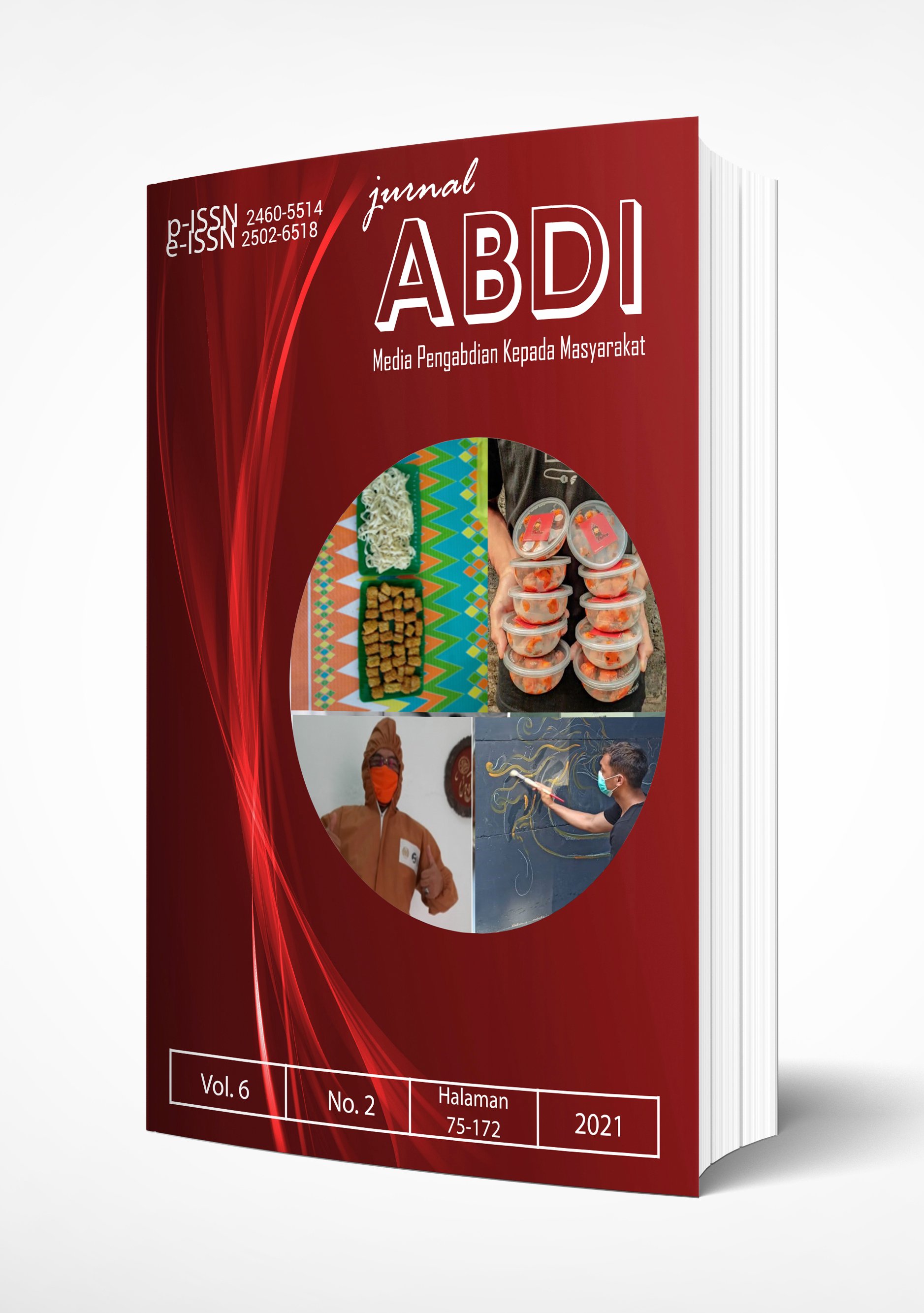EFEKTIVITAS PELAKSANAAN BLENDED LEARNING DI SMAN 4 SINGARAJA
DOI:
https://doi.org/10.26740/ja.v6n2.p103-109Keywords:
blended learning, flipped classroom, Program Kemitraan MasyarakatAbstract
The purpose of this Community Partnership Program was to describe the effectiveness of the implementation of blended learning at SMAN Singaraja, Buleleng, Bali. For that, five subjects were used as pilots for the implementation of blended learning projects. They were Chemistry, Physics, Biology, English and Religion. The selection of them as pilot projects was based on the readiness of subject matter partners to carry out blended learning and partners competencies in mastering information technology. Before implementing the blended learning, the partners created online contents of the subjects. During the creation of these online contents, the partners were guided by Community Partnership Program implementers. The platform used to create online content was google classroom. The implementation of blended learning used the flipped classroom model. In this model, students learnt the contents first at home uploaded online by partners. The contents uploaded online in the forms of learning materials, textbooks, learning videos, students worksheets, and assignments related to the topic being studied. The results of implementation of the blended learning were as follows. The average score of partners' skills in implementing the blended learning were 2.72 and 4.38, respectively, with a normalized gain score of 0.73 (relatively high). Students learning outcomes had reached the classical learning completeness of 87.50% (exceeding the classical completeness criteria of 85%). Students responded to the implementation of blended learning very well (the average score of 4.35).Downloads
Download data is not yet available.
References
<p>Al-Madani, F. M. 2015. The Effect of blended learning approach on fifth grade students academic achievement in my beautiful language textbook and the development of their verbal creative thinking in Saudi Arabia. Journal of International Education Research, 11(4), 253-260.</p><p>Ceylan, V. K. & Kesici, A. E. 2017. Effect of blended learning to academic achievement. Journal of Human Sciences, 14(1), 308-320.</p><p>Gambari, A., I. & Shittu, A. T., Ogunlade, O. O., & Osunlade, O. R. 2017. Effectiveness of blended learning and elearning modes of instruction on the performance of undergraduates in Kwara State, Nigeria. Malaysian Online Journal of Educational Sciences, 5(1), 25-36.</p><p>Gómez, L. A. O. & Duart, J. M. 2011. A hybrid approach to university subject learning activities. British Journal of Educational Technology, 42(2), 259-271.</p><p>Harahap, F., Nasution, F. E. A., & Manurung, B. 2019. The effect of blended learning on students learning achievement and science process skills in plant tissue culture course. International Journal of Instruction, 12(1), 521-538.</p><p>Hinampas, R. T., Murillo, C. R., Tan, D. A., & Layosa, R. U. 2018. Blended learning approach: Effect on students academic achievement and practical skills in science laboratories. International Journal of Scientific & Technology Research, 7(11), 63-69.</p><p>Khader, N. S. 2016. The effectiveness of blended learning in improving students achievement in third grades science in Bani Kenana. Journal of Education and Practice, 7(35), 109-116.</p><p>Kintu, M. J., Zhu, C. & Kagambe, E. 2017. Blended learning effectiveness: the relationship between student characteristics, design features and outcomes. International Journal of Educational Technology in Higher Education, 14(7), 1-20.</p><p>Lee, L. T. & Hung, J. C. 2015. Effects of blended e-Learning: A case study in higher education tax learning setting. Human-centric Computing and Information Sciences, 5(13), 1-15.</p><p>Nguyen, V. A.. 2017. The impact of <em>online</em> learning activities on student learning outcome in blended learning course. Journal of Information & Knowledge Management, 16(4), 1-21.</p><p>Oweis, T. I. 2018. Effects of using a blended learning method on students achievement and motivation to learn english in Jordan: A pilot case study. Hindawi Education Research International, 1-7.</p><p>Rahman, A. M. A. 2018. English writing performance using blended learning in TVET education. Language Literacy, 2(1), 28-36.</p><p>Sen, T. K. 2011. Application of blended and traditional class teaching approach in higher education and the student learning experience. International Journal of Innovation, Management and Technology, 2(2), 107-109.</p><p>Syarif, I. 2012. Pengaruh model blended learning terhadap motivasi dan prestasi belajar siswa SMK. Jurnal Pendidikan Vokasi, 2(2). 234-249.</p><p>Tselios, N., Daskalakis, S., & Papadopoulou, M. 2011. Assessing the acceptance of a blended learning university course. Educational Technology & Society, 14(2), 224-235.</p>Vasantan, P. 2016. Blended learning method based on local wisdom as a spiritual guidance holy trinity community in district bengkayang. Journal of Education, Teaching and Learning, 1(1), 36-40.
 Abstract views: 417
,
Abstract views: 417
, PDF Downloads: 226
PDF Downloads: 226




